The Unbroken Story of Palestinian Resistance
Part Two: From the Chains of Oslo to the Siege of Gaza
Madrid, Oslo, and Paris: The Arc of Defiance, Compromise, and Dependency
What happens when a liberation movement is bargained away in exchange for political power along with a few hollow promises?
The Oslo process promised peace but delivered treachery. Touted as a diplomatic breakthrough, it unfolded through bitter ironies, missed opportunities, and calculated sabotage—culminating in one of the most monumental failures in the history of the Palestinian cause. Together with the Paris Protocol that followed the next year, these agreements unraveled the hard-won gains of the Stone Intifada. Their devastating consequences embodied precisely the kind of capitulation Ghassan Kanafani had warned against decades prior. His prophetic words about negotiating from a position of weakness became a damning reality: “That is a kind of conversation between the sword and the neck.”
The Madrid Conference of 1991, which occurred two years prior to the Oslo Accords, was not gifted to us; it was a hard-won outcome of the First Intifada. The stones thrown in Gaza’s alleys and the blood-stained keffiyehs of the West Bank ripped off the Occupation’s mask of morality, forcing the world to take notice. Israel was dragged to the negotiation table in Madrid, not out of generosity but because the cost of ignoring us had grown too high.
For the first time, Palestinian representatives sat face-to-face with Israeli officials in a public forum. Haider Abdel Shafi, Faisal Husseini, and Hanan Ashrawi—leaders who carried the spirit of the uprising—challenged decades of colonial conspiracy. These were not figures detached from the realities of occupation but voices rooted in its oppression. They were the embodiment of collective defiance, refusing to speak the language of surrender. Madrid was a fleeting moment when the Palestinian cause transcended invisibility, forcing the world to recognize it as more than a regional footnote.
But colonialism follows a playbook, and history repeats itself with merciless precision. Madrid gave way to yet another chapter where collaborators were exploited to fracture resistance, turning hard-won victories into avenues for capitulation. The PLO, having surrendered in Beirut and been exiled to Tunisia, found itself increasingly irrelevant as leaders on the ground became the true faces of the struggle. Bypassed as representatives of the Palestinian people in Madrid, Yasser Arafat and key figures in the Tunis-based leadership like Mahmoud Abbas entered secret backchannel negotiations with Israel in Oslo.
While our delegates in Madrid stood firm, presenting a united front, Arafat undermined the process through these backdoor negotiations. These talks were not about advancing the collective will but about restoring his position as the undisputed leader of the Palestinian people. In doing so, they abandoned the momentum built by the First Intifada and Madrid, sacrificing the Palestinian cause and its resistance for empty assurances and short-lived recognition.
Once made public, the 1993 Oslo Accords were hailed as a diplomatic breakthrough in international circles. But to even be recognized as a party to the negotiations, the PLO surrendered foundational pillars of the Palestinian cause, including recognition of Israel’s “right to exist” and a renunciation of armed resistance.
By conceding 78% of historic Palestine, they agreed to negotiate from a position that abandoned the vast majority of our homeland. This set the stage for discussions where liberation was sidelined, and mere survival became the focus. These staggering concessions were not the product of negotiation but the price of admission, the cost of a seat at the table, made before a single substantive discussion began.
The PLO entered Oslo already weakened—negotiating from desperation, not strength—while Israel arrived emboldened, dictating the terms unilaterally, with the power dynamics resembling a conversation between the sword and the neck.
The Oslo Accords, negotiated in secret and signed in 1993, were presented to the world as a historic breakthrough. But to us, they were a betrayal of the unity forged during the Intifada and the momentum gained in Madrid. Instead of building on the strength of the grassroots movement, Oslo reduced our struggle to a framework of compromises dictated by the occupier. Arafat’s negotiations sidelined the leaders of the Intifada and dismissed the collective demands we had so fiercely defended, further eroding the foundations of resistance.
Out of these agreements emerged the Palestinian Authority (PA), a governing body tasked with administering Palestinian enclaves in the West Bank and Gaza. Presented as a step toward self-determination, the PA’s role was, in reality, limited to managing day-to-day affairs under Israel’s overarching control. It was sovereignty in name only, a hollow structure stripped of power, while Israel retained its domination over borders, resources, and security.
Oslo divided the West Bank into Areas A, B, and C—fragments of sovereignty that amounted to little more than administrative enclaves. The settlements, the refugees, and the fate of Jerusalem were left as “final status issues,” endlessly deferred while Israel continued its expansion unchecked. These critical issues were similarly deferred in subsequent agreements, reinforcing the imbalance.
This political subservience was mirrored on an economic level cemented by the 1994 Paris Protocol. This agreement, another disaster authored by Arafat and Abbas, handed control of Palestinian trade, taxation, and financial systems to Israel, compounding dependency already established in the Oslo framework. Instead of building economic independence, the protocol became another colonial weapon. It tethered the Palestinian economy to its occupier, deepened structural inequalities, and ensured the imbalance of power would remain unchallenged.
Water, the lifeblood of our land, became another tool of domination. During negotiations, Israel’s delegation outnumbered ours with over 130 water experts to our two. They ensured their control over the West Bank’s aquifers, leaving us rationed and dependent. While Israeli settlers filled their swimming pools, our farmers struggled to irrigate their crops. The imbalance was clear, a deliberate effort to stifle our development.
Similarly, the Paris Protocol’s currency restrictions left us reliant on the Israeli shekel, depriving us of the ability to manage our own monetary policy. Access to Israeli jobs became another weapon of control. Permits were granted and revoked at Israel’s whim, destabilizing Palestinian families and deepening our economic vulnerability. Paris was not a path to cooperation—it was the codification of dependency.
While Oslo legitimized the PA’s presence in the West Bank and Gaza, it failed to address the most critical issues: settlement expansion, the right of return for refugees, and the status of Jerusalem. These omissions were not oversights but deliberate exclusions, enabling Israel to pursue its expansionist ambitions under the guise of a "peace process."
Deferred to what they called “final status negotiations,” an undefined phase that Israel never intended to honor, these most vital of Palestinian demands remained suspended infinitely. This ambiguity created a vacuum, allowing Israel to expand its settlements unchecked, while Palestinians were held to comply with an interim agreement that delivered only further subjugation.
At the time of the Oslo Accords, there were approximately 150,000 settlers in the West Bank; today, that number is approaching 800,000. This surge in settlements, beginning under Oslo and continuing unchecked, demonstrates how these structures serve as instruments of domination, severing Palestinian land and cementing Israeli control.
What Oslo truly delivered was a shift in Palestinian leadership from resistance to complicity. The PA, under Yasser Arafat and later Mahmoud Abbas, became an entity that administered occupation rather than opposing it. Security coordination with Israel, lauded internationally as a stabilizing measure, became a tool for suppressing Palestinian dissent.
Bolstered by international funding—primarily from the European Union, the United States, Arab League states, and international financial institutions such as the World Bank—the PA relied on these resources and the empty framework of governance to maintain control. Its security apparatus turned inward, targeting Palestinian activists, critics, and resistance movements to maintain “order.”
Instead of resisting the structures of colonialism, the PA became their enforcer—overseeing its own subjugation and eroding its legitimacy among the very people it claimed to represent. Oslo did not bring peace; it entrenched oppression under the guise of progress. It institutionalized Palestinian fragmentation, ensuring that the West Bank, Gaza, and Jerusalem remained divided in governance and reality.
Israel expanded its control while Palestinians bore the weight of disillusionment and deception. Ghassan Kanafani’s warnings resonate through this treachery: negotiating from a position of weakness does not lead to liberation; it leads to capitulation. Oslo was not a diplomatic breakthrough but a manipulated strategic victory for Israel—achieved without firing a single shot.
The Second Intifada
The assassination of Israeli Prime Minister Yitzhak Rabin in 1995 by an ultra-nationalist Zionist extremist exposed the fragility of the illusions perpetuated by Oslo. Rabin, heralded as the architect of Israel’s participation in the Accords, became a target—not for what Oslo delivered, as it overwhelmingly favored Israeli interests—but for the faintest suggestion of Palestinian rights to existence. His death sent a chilling message: even the most far-reaching Palestinian concessions could never satisfy those ideologically bent on settler-colonial domination and erasure.
The assassination marked a turning point. Subsequent Israeli governments dismantled what little Oslo had promised, accelerating settlement expansion and tightening the Occupation’s grip on Palestinian life. Settlement construction surged across the West Bank, carving up the land and consuming its lifeblood. Jerusalem—our cultural, spiritual, and historical heart—became the focal point of an erasure campaign designed to strip it of its Palestinian identity. Checkpoints multiplied like tumors, choking movement and reducing daily life to a series of humiliations. Land confiscations and home demolitions became routine acts of colonial punishment, while the Occupation weaponized “security” as a justification for relentless violence and control.
In September 2000, Ariel Sharon’s heavily militarized visit to Al-Aqsa Mosque ignited the Second Intifada, a response born of decades of frustration and the realization that negotiations under the Occupation’s terms would lead only to deeper subjugation. This act, against the backdrop of Oslo’s broken promises and the collapse of the Camp David agreements—an attempt in 2000 to resolve final status issues like Jerusalem, refugees, and borders that ultimately collapsed without any meaningful progress—catalyzed widespread resistance.
Resistance in the Second Intifada involved many players. Hamas emerged as a leading force, leveraging its grassroots networks to organize protests, provide social services, and carry out armed operations. Its military wing, the Al-Qassam Brigades, engaged in guerrilla attacks and symbolic rocket launches, challenging Israeli military dominance. Similarly, Islamic Jihad and its military wing, Saraya Al-Quds, carried out bombings and operations, while the PFLP combined armed resistance with ideological critique, gaining notoriety for high-profile actions like the assassination of Israeli Tourism Minister Rehavam Ze’evi.
The PA’s response during the Intifada revealed deep contradictions. Initially, some factions supported the uprising as a means to reclaim legitimacy after years of failed negotiations. However, under international pressure, the PA shifted toward suppressing dissent, fulfilling its Oslo-mandated role as a security partner for Israel. This disloyalty deepened internal divisions and eroded trust, solidifying the PA’s reputation as an enforcer of colonial stability rather than a defender of liberation.
Sustained Palestinian resistance exacted a significant cost on the Israeli occupation, particularly in Gaza. By 2005, this pressure forced Ariel Sharon to implement unilateral disengagement, withdrawing settlers and military outposts from the Strip. While Israel sought to reframe this as a strategic decision, it reflected the untenable nature of maintaining control in the face of persistent defiance. Still, Israel retained control over Gaza’s borders, airspace, and coastal waters, transforming it into a sealed reservation deprived of economic and political viability. Meanwhile, the West Bank was carved into fragments dominated by settlements and military outposts.
The legacy of the Second Intifada stands as a powerful testament to Palestinian resilience and the profound sacrifices made in the pursuit of justice and freedom. From the steadfast defiance in Jenin’s alleys to the enduring courage amidst Gaza’s ruins, it underscores that resistance is not a choice but an imperative—a relentless refusal to yield existence to the chains of occupation and erasure.
The Fallout of the Second Intifada and the Path to Division
The fallout from Oslo and the Second Intifada’s conclusion set the stage for one of the most significant political moments in Palestinian history: the 2006 legislative elections, an unprecedented moment of democratic transition under occupation. These elections were conducted under international observation, with former U.S. President Jimmy Carter and his organization, The Carter Center, among those monitoring the process. Carter praised the elections as a model of transparency, declaring them free and fair—a clear contrast to the immediate fallout that followed.
The elections themselves reflected widespread disillusionment with the PA. Years of corruption, unfulfilled promises, and complicity in maintaining the status quo had eroded public trust in Fatah, the leading party in the PA. Hamas, presenting itself as a force of reform and steadfast resistance, filled the vacuum left by the PA’s failures. Its platform emphasized social welfare, anti-corruption, and resistance to the Occupation—an agenda that resonated deeply with Palestinians disillusioned by decades of systemic repression and the failures of Oslo. Unlike Fatah, Hamas explicitly refused to recognize Israel, rejecting negotiations and framing armed resistance as the only path to liberation. This ideological divide with Fatah would later deepen political tensions.
The U.S. and Israel, fully aware of Hamas’s participation and growing popularity, allowed the elections to proceed under the arrogant assumption that Fatah’s dominance was unshakable. This miscalculation proved catastrophic for their strategic interests. When Hamas emerged victorious, securing 74 of 132 seats in the Palestinian Legislative Council, it shocked the international community and upended the established political order. This majority allowed Hamas to form a government, with Ismail Haniyeh becoming Prime Minister. For Palestinians, the results symbolized a rejection of Fatah’s corruption and collaboration with the Occupation. For the U.S., Israel, and the European Union, however, a Hamas-led government was unacceptable.
Hillary Clinton’s remarks on the election revealed the cynicism underpinning international reactions. She remarked: “If we were going to push for an election, then we should have made sure that we did something to determine who was going to win.” This candid statement laid bare the willingness of Western powers to undermine democratic processes when outcomes defied their geopolitical designs.
What does democracy mean when its outcomes are only respected if they align with the interests of those in power? Is it democracy at all if the will of the people can be dismissed, undermined, and punished when it defies imperial designs?
The fallout was swift and deliberate. Viewing Hamas’s refusal to recognize Israel as a direct threat, these powers imposed severe sanctions and cut critical funding to the PA, plunging the Palestinian territories into economic desperation—a crisis engineered to punish Palestinians for exercising their democratic rights. The U.S. and Israel spearheaded efforts to isolate the Hamas-led government, applying immense pressure on Fatah to oppose its rival. General Keith Dayton, an American officer, oversaw the arming and training of Fatah-aligned security forces, setting the stage for violent conflict between the factions.
The PA’s security apparatus, restructured under Dayton’s leadership, played a critical role in suppressing resistance fighters and Hamas-affiliated groups in the West Bank. PA forces, mockingly referred to as “Dayton’s Men” by Palestinians, coordinated intelligence sharing and operations with Israel, targeting resistance groups and further alienating the public. While framed by the U.S. and Israel as stabilizing, this collaboration was widely condemned by many, who viewed the forces as enforcers of the Occupation. This alignment not only eroded the PA’s legitimacy but also deepened the political and geographic divide between the PA-controlled West Bank and Hamas-controlled Gaza.
By 2007, rivalry between Hamas and Fatah erupted into open warfare. In a series of bloody clashes, Hamas expelled Fatah forces from Gaza and established governance over the Strip. Mahmoud Abbas dissolved the Hamas-led government and declared an emergency administration in the West Bank, leaving fractured leadership vulnerable to exploitation by external powers. While Fatah consolidated control over the West Bank with U.S. and Israeli support, Hamas maintained control over Gaza, which became increasingly isolated. Israel exploited this division, citing the lack of “a single Palestinian partner” for peace, and imposed a brutal blockade on Gaza, turning it into an open-air prison.
The consequences of this schism were devastating. Palestinian leadership was fragmented, creating two rival governments and deepening mistrust among the people. This political fracture weakened the national movement and made unity nearly impossible, leaving the Occupation as the sole beneficiary. Under an intensified blockade, Gaza became a focal point of collective suffering, cut off from essential goods, services, and economic opportunities. Israel leveraged the division to further entrench its control, while Palestinians endured unrelenting punishment.
The blockade turned Gaza into a symbol of suffering and resistance. Acts of defiance—from peaceful protests to symbolic resistance—were met with overwhelming retaliation from Israel, exacerbating Gaza's plight. Operation Cast Lead in 2008–2009 marked the beginning of large-scale assaults on Gaza. Entire neighborhoods were destroyed, hospitals overflowed, and families searched for their dead in the rubble. Gaza became both a testament to Palestinian resilience and a cautionary tale of collective punishment.
This chapter in Palestinian history underscores the interplay of external manipulation and internal division. The 2006 elections, which initially carried hope as a democratic breakthrough, became another battleground in the broader struggle for liberation—a fight that persists against overwhelming odds.
The Gaza Strip Blockade
The blockade that followed became a harbinger of even greater suffering, as Gaza was transformed into a stage for unrelenting violence.
Since 2008, Gaza has endured repeated assaults—2008-2009, 2012, 2014, 2021, and now the ongoing genocide in 2024—each deepening the humanitarian catastrophe. Relentless bombardments have shattered civilian infrastructure, claimed thousands of lives, and left countless families homeless.
In 2018, the people of Gaza launched the Great March of Return, a peaceful protest demanding the right of return for refugees and an end to the siege. Tens of thousands gathered near the fence, unarmed, asserting their humanity against an Occupation that sees them as expendable. Week after week, men, women, and children faced live fire, tear gas, and rubber bullets from Israeli forces. By the time the protests ended, hundreds had been killed, and thousands more wounded. The message was unmistakable. Even peaceful resistance, even the simple assertion of a right recognized by international law, was met with violent repression.
If peaceful resistance leads only to slaughter, if the world dismisses nonviolent protests and ignores the cries for justice, does resistance demand a different path? What options remain for a people fighting for their existence?
Each massacre, each breach of ceasefire, and every hollow promise of “peace” delivers a singular message: to dream of freedom is to invite death. The Zionist project can level any Arab city with impunity, under the shield of vetoes and international law, whenever it suits its agenda. Moshe Dayan, a prominent Israeli military leader and politician who served as Defense Minister during pivotal moments of Israeli expansion, encapsulated this philosophy with his blunt declaration: “We have no solution. You [Palestinians] shall continue to live like dogs, and whoever wishes may leave, and we will see where this process leads.” His words expose the Occupation’s dehumanizing strategy, one that crushes resistance by rendering Palestinian existence unlivable and freedom unimaginable.
This annihilation of hope echoes Jabotinsky’s foundational Iron Wall theory. Ze'ev Jabotinsky—a leading Zionist thinker and founder of Revisionist Zionism—argued that Jewish settlement in Palestine would inevitably face Arab resistance. Known for his militant stance, he advocated for creating a strong Jewish state by confronting opposition head-on. In his words: “Every native people will resist alien settlers as long as they see any hope of ridding themselves of the danger of foreign settlement... This is a natural and normal reaction of colonized people everywhere. Thus, the voluntary agreement of the Palestinian Arabs is inconceivable now or in the future.” For Jabotinsky, the only way to secure Jewish sovereignty was through overwhelming military force, constructing a metaphorical “iron wall” to crush all resistance and make Zionist domination appear inevitable.
Theodor Herzl, regarded as the father of modern political Zionism, framed Palestine as a European frontier in his book The Jewish State (1896). “We should there [in Palestine] form a part of a wall of defense for Europe in Asia, an outpost of civilization against barbarism.” Herzl’s colonial vision laid the groundwork for an ideology that not only cast indigenous resistance as barbaric but also sought to eliminate the indigenous people themselves as obstacles to conquest and domination. These ideas were not confined to the past. They remain the blueprints for modern settler-colonial policies, from the expansion of settlements to the erasure of Palestinian identity and rights.
Netanyahu’s rebranding of his genocidal war from “Iron Swords” to “Resurrection War” reflects a continuation of this ideology with deeper messianic ambition. The term “resurrection” invokes the belief that Israel’s rebirth requires the complete subjugation of its enemies. It aligns with the idea that Israel’s adversaries must never rise again, reflecting themes of total victory in Torah teachings. By framing the war as part of a larger messianic struggle, Netanyahu signals that Israel’s continuity and survival depend on erasing any threat and securing its supremacy through overwhelming military force.
As Israel escalated its massacres in Gaza, the world stood by, indifferent, until genocidal atrocities became little more than background noise, no longer worthy of attention. This indifference is part of the Occupation’s strategy to isolate Palestinians, making us believe we are alone, coldly murdered by what the Zionist project wants us to see as an unstoppable, more sophisticated, superior force.
We are a people who have been asked to forget, to surrender, to break ourselves into smaller pieces that fit within the colonial imagination. But we remember. And because we remember, we resist.
We are the bearers of an unbroken flame. We are the natives in exile who carry the keys of return, the resistance fighters who face down tanks, the civilians who refuse displacement under the shadow of AI and drones, the prisoners who defy their captors. Our liberation is not a question of if but when.
Let them build their walls. Let them write their accords. We will tear them down. For we are not just survivors of a colonial project; we are its undoing. We are the memory that cannot be erased.
Sheikh Izzaddin Al-Qassam’s final words, “victory or martyrdom,” spoken as he embraced martyrdom in 1935 while fighting British and Zionist forces, ignited the Great Palestinian Revolt of 1936 and continue to echo across generations. His legacy, embodied today by the Izzaddin Al-Qassam Brigades, the military wing of Hamas, remains a testament to the idea that liberation will never come through appeals to colonial or imperial morality.
Al-Qassam’s words resonate now as they did then. In the face of oppression designed to uproot and erase, the only choice for a people who refuse to surrender is to resist—to live for life, land, and freedom, until victory or martyrdom.

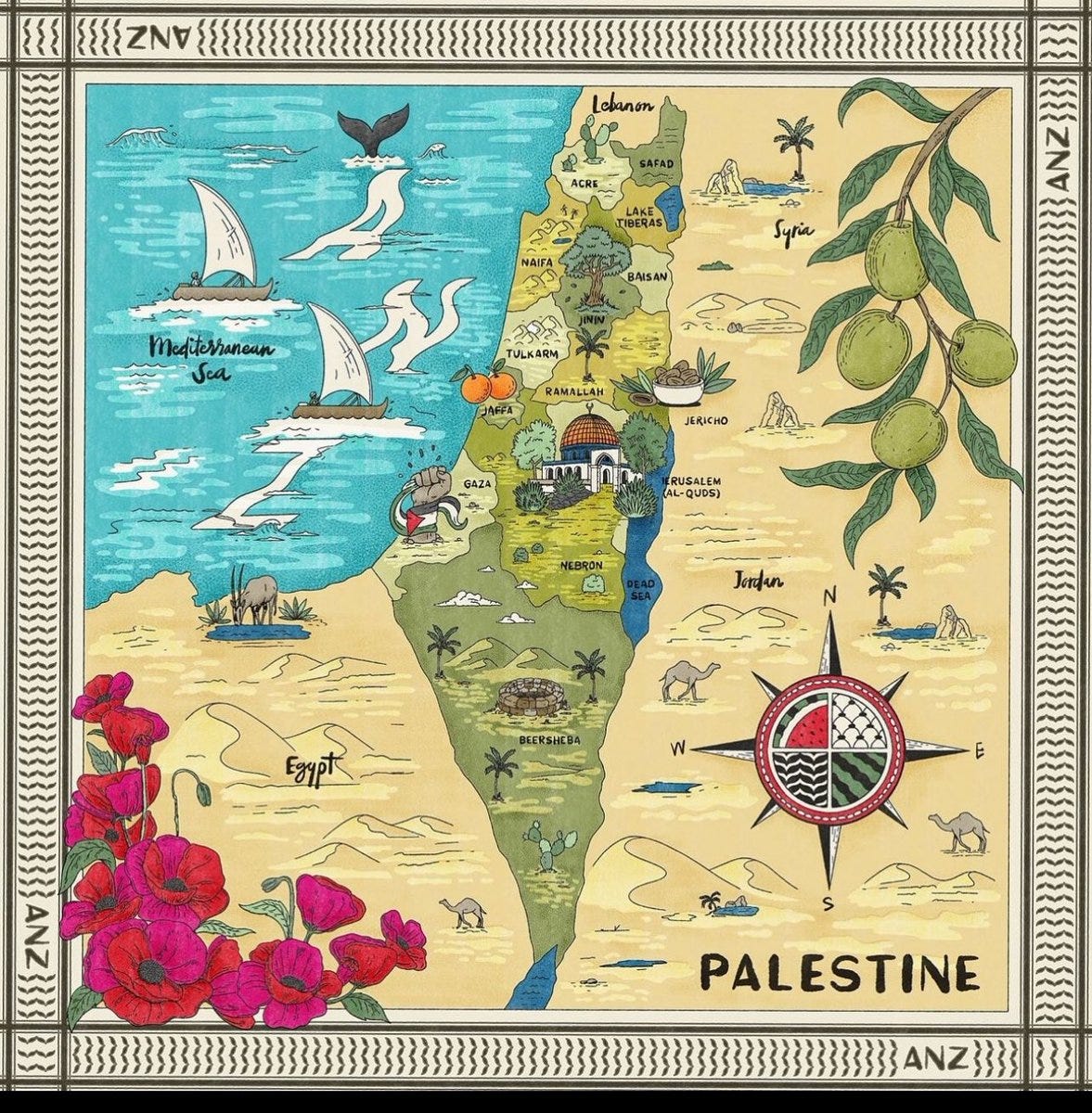
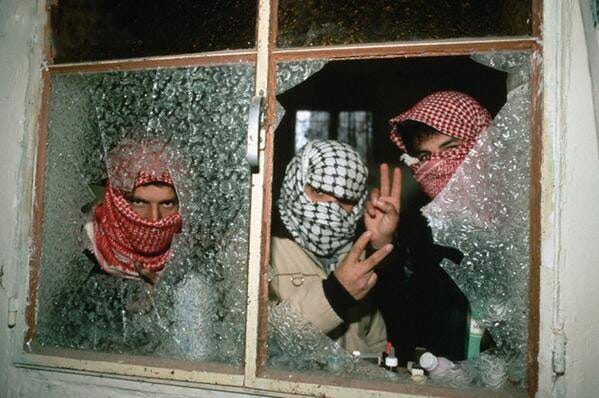



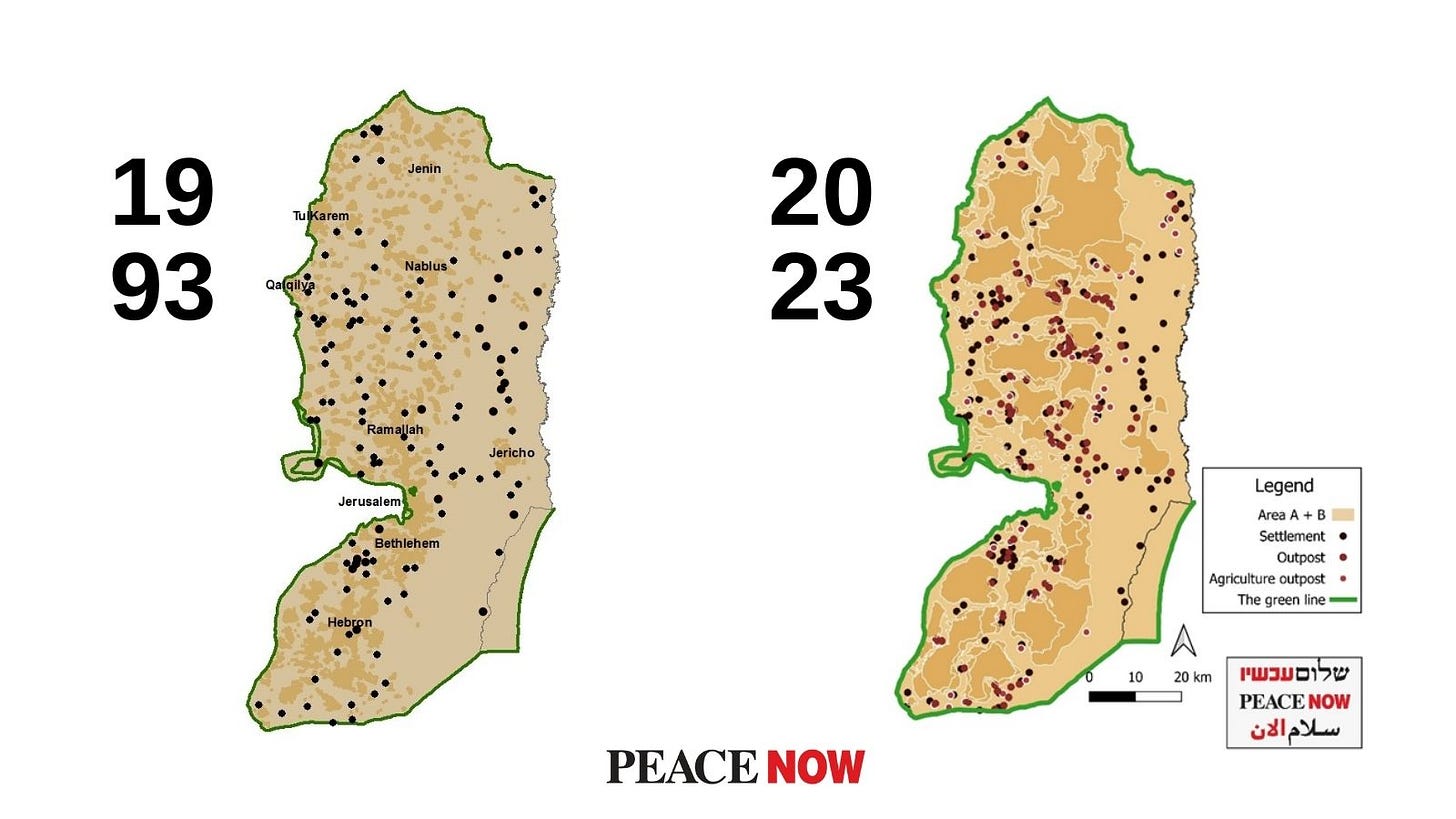
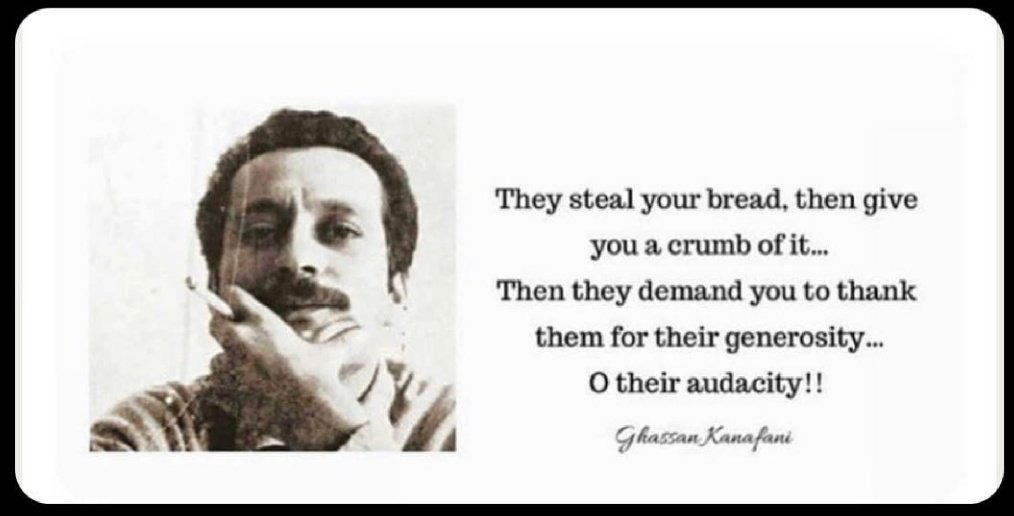
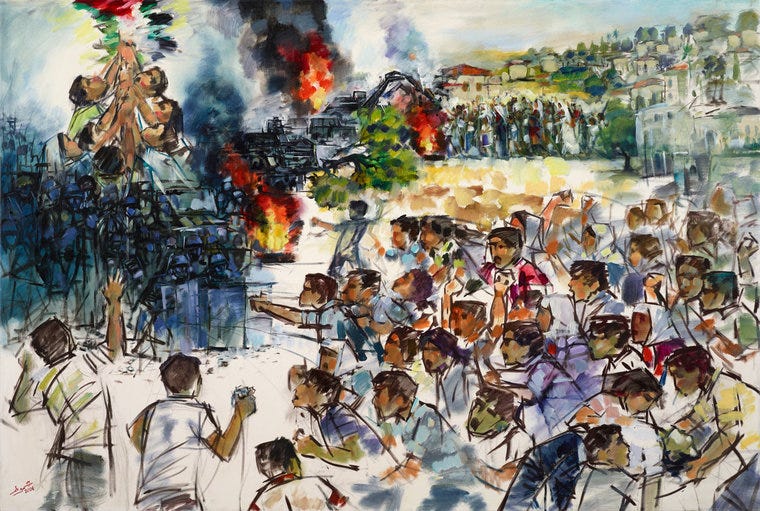

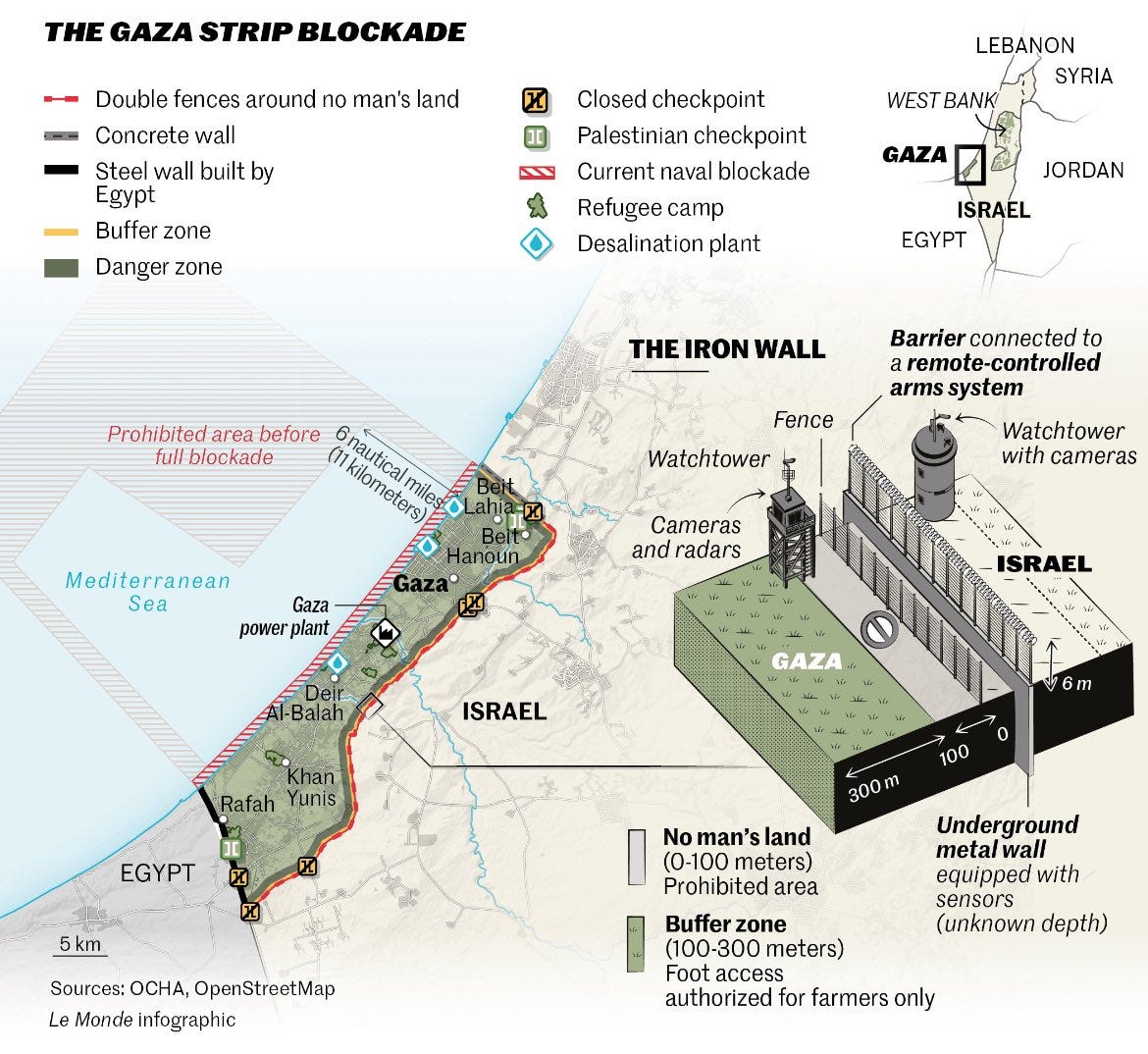


🥺🥺🫂🫂❤️❤️
Amid all this darkness, love and prayers for the people of Palestine still live in our hearts.
My heart aches for their pain, yet I believe that kindness will one day triumph over cruelty.